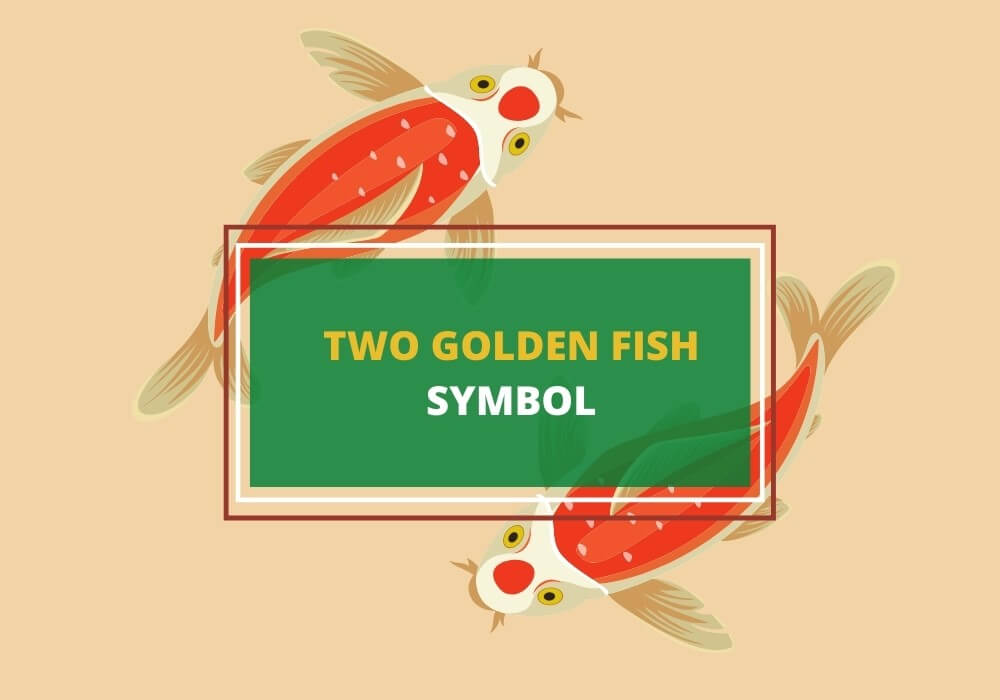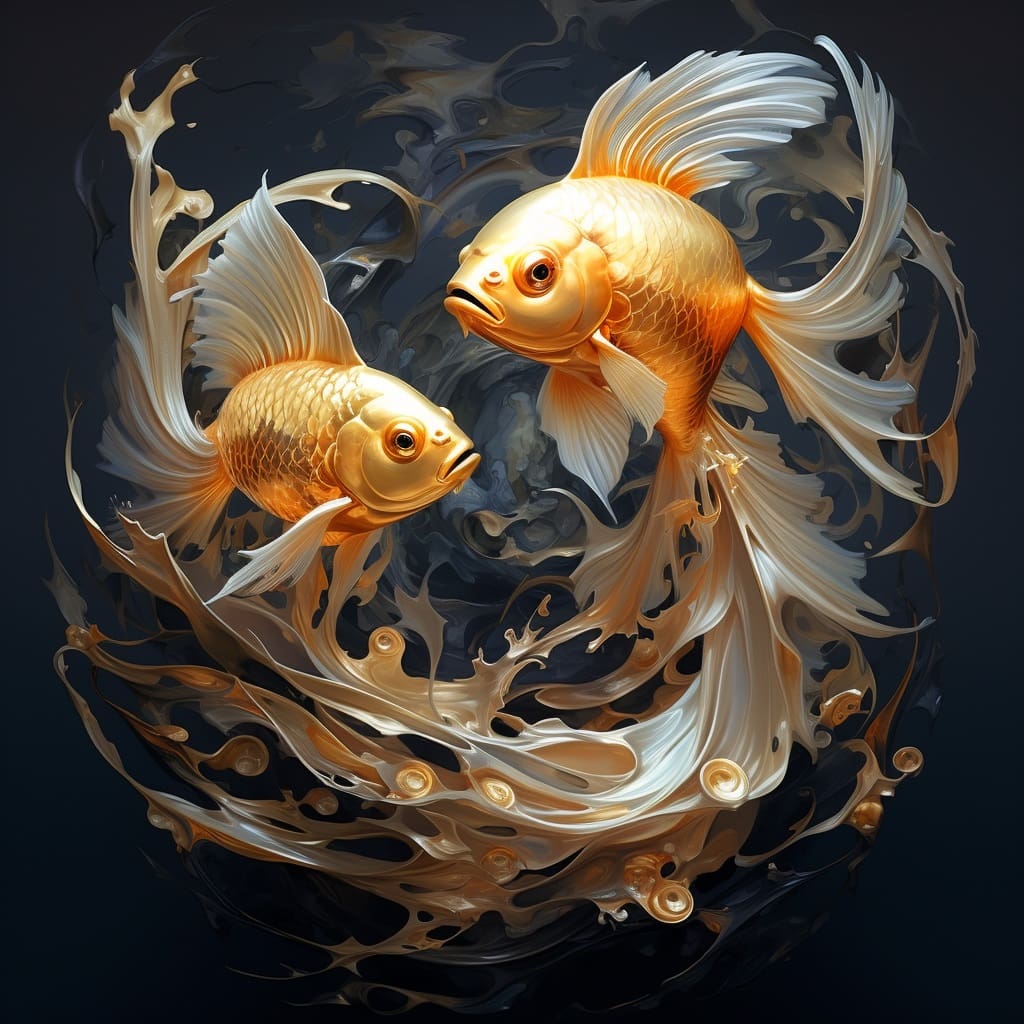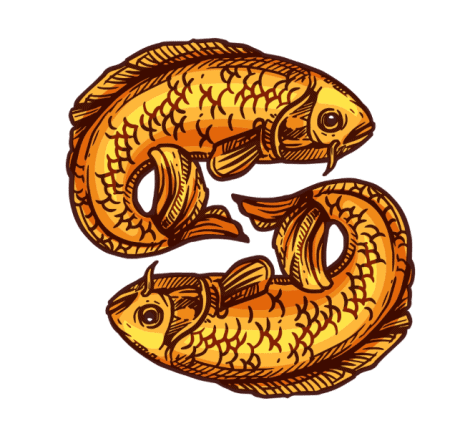
Table of Contents
A pair of golden fish (carp, usually) forms part of the Ashtamangala, an eight-piece suite of auspicious signs associated with Buddhism and other related beliefs like Jainism and Hinduism. In this article, we will dive into the history and meaning of the pair of golden fish as a symbol of good luck.
History of the 8 Auspicious Symbols in Buddhism
In Buddhism, there are eight symbols used to represent the qualities of an enlightened mind. Among these symbols is a pair of golden fish, or gaurmatsya in Sanskrit.

Initially, the creatures symbolized the two principal sacred rivers in India – Yamuna and Ganges. The rivers, in turn, represent the lunar and solar channels of one’s nostrils, which give way to the alternating rhythms of breathing: taking in air and exhaling it right out.
In Hinduism, the god Vishnu is said to have transformed into a fish in order to save the first man from a considerable flood, much like the one that plagued humanity in the Christian story of Noah and the Ark. By turning into a fish called Matsya, god granted mankind salvation so they can experience a prosperous life.
According to old Chinese traditions, vases and other ornaments bearing the twin golden fish are popular presents for young couples and newlyweds. They believed the creatures represent males and females who need each other in order to create life.
Meaning and Symbolism

Different cultures have different interpretations of these old stories. Therefore, a pair of golden fish as a symbol has acquired a multitude of meanings, including the following:
- Prosperity – India’s main rivers paved the way for civilization, as communities thrived along their banks. Since the pair of golden fish directly symbolizes the rivers, the symbol is associated with prosperity.
- Safety – By rescuing humanity from a huge flood, Vishnu is thought to have pledged to keep Hindus safe, much like the fish, which do not drown in oceans or earthly troubles.
- Balance – By depicting fish in pairs, symmetry and balance are achieved. Therefore, the image is thought to represent balance and perfect rhythm in life. Likewise, Buddhists are firm believers of the unity of emotion and intellect to achieve rational consciousness – something that the twin fish represent.
- Loyalty – The two golden fish are inseparable parts of one picture; thus, the pair is said to represent harmony and loyalty between romantic and even platonic couples.
- Creation – Fish symbolize life-sustaining waters. Additionally, as discussed earlier, the pair is capable of creation only as long as they are together.
- Fertility – Fish multiply very quickly, thus symbolizing fertility
- Freedom – Fish swim freely and have complete liberty of traversing the water. They are untethered to systems of caste and status. Thus, the creatures are able to roam waters fearlessly.
- Happiness – Buddhists believe happiness and peace are only ever achieved when one can move freely like fish in the water.
- Good fortune – The symbol of two golden fish is exclusively used as a good omen, thus pointing to the general idea of good fortune.
Two Golden Fish in Jewelry and Fashion
All these positive connotations make the two golden fish a popular choice for incorporation in fashion and jewelry. They are often engraved in lockets and formed into pendants to grant its owner the confidence to go through life without the worry of bad luck or misfortune. This design is also popular on artwork, decorative items, clothing and as tattoos.
In Brief
While the image of a sole fish is a common emblem of good luck, Buddhists have managed to preserve the image of two golden fish as a unique part of their culture and lifestyle. It represents auspiciousness, abundance, and balance, which is also known as the key to a fulfilling life.








